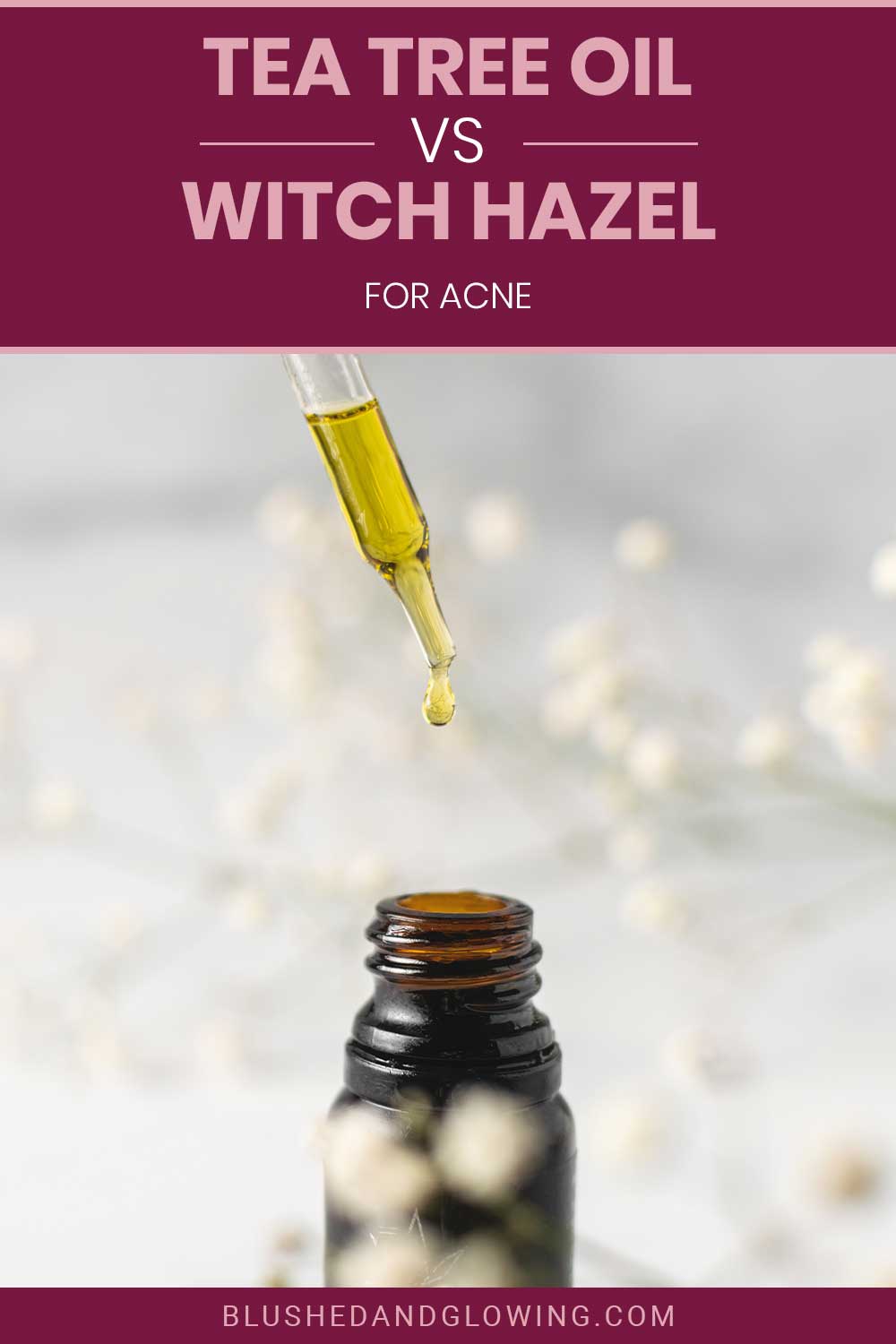Tea Tree Oil vs. Witch Hazel for Acne
We may earn commissions for purchases made through links on our site. Learn more on our about us page.
Acne can affect not only your physical appearance but your mental image of yourself. This can have a huge impact on your life and self-confidence, so we can understand why many people who suffer from acne are on the constant hunt for new products to combat it.
With so many options out there, it can be tough to know what to try next. That’s why we’re here to break down two popular acne-fighting ingredients: tea tree oil and witch Hazel. Both of these natural remedies have been touted for their ability to clear up acne.
But which one is the right one for you? Let’s compare these two to help you in your decision-making process.

What are the Similarities?
When looking at new products for any type of healthcare, especially skincare, understanding the similarities and differences is vital. So let’s start with the similarities between tea tree oil and witch hazel.
The biggest is that both of these ingredients are known for their natural comet plant-based properties. Tea tree oil is derived from the tea tree leaves, while witch Hazel comes from the bark and leaves of the witch hazel shrub.
This means they don’t contain the harsh chemicals that are often found in commercial acne treatments. But this isn’t the only similarity:
- Both have anti-inflammatory and antimicrobial properties.
- Easy to incorporate into your skincare routine
What are the Differences?
Now it’s time to dive into the differences between the two. While, as we have said above, both have similar properties, there are a few unique qualities to each that make them stand out from each other. Here are those differences:
- Tea tree oil is known for its potent antibacterial properties and is often recommended for those with moderate to severe acne. Witch hazel is a more gentle option and may be better suited for those with mild to moderate acne.
- The application method varies as well. Tea tree oil is typically applied as a spot treatment or mixed with carrier oil. Witch hazel is often used as a toner or added to a DIY face mask.
- Tea tree oil also has a very strong and particular scent that some people often find unpleasant. Witch hazel has a more subtle and earthy scent.
- Finally, tea tree oil has been known to irritate some people’s skin. This is especially true when used in high concentrations. Witch hazel is considered more gentle and less likely to irritate.
Pros & Cons: Tea Tree Oil vs. Witch Hazel
Both tea tree oil and witch hazel have their pros and cons when it comes to treating acne. Here is a look at those:
Tea Tree Oil
Pros:
- Potent antibacterial properties
- It can be used as a spot treatment or mixed with carrier oil for easy application.
- Effective for other skin concerns such as dandruff and athlete’s foot
- Natural plant-based ingredient
Cons:
- A strong, distinct scent
- It can be irritating to certain people’s skin
- It can be toxic and should not be ingested
Witch Hazel
Pros:
- Anti-inflammatory properties likely even
- Able to be used as a toner or added DIY face masks
- Gentle and less likely to cause irritation
- Naturally plant-based ingredient
Cons:
- It may not be as effective as tea tree oil for moderate to severe acne
- The scent may be off-putting to some people
- Not as effective for people with dry skin
Which One Has More Natural Ingredients?
Tea tree oil and witch hazel are great options for natural acne treatments. If you’re looking for one with more natural ingredients, witch hazel may hedge out tea tree oil by just a smidge.
Witch hazel is extracted directly from the bark and leaves of the witch Hazel shrub. This makes it 100% natural.
Tea tree oil is extracted from the tea tree leaves but is often distilled and processed before it can be used as a skincare product. This means that tea tree oil may not be as natural as witch hazel, depending on how it’s processed.
Which One Is More Versatile?
Both witch hazel and tea tree oil are quite versatile when it comes to purposes that go beyond simply treating acne. However, the trio takes the lead in this scenario if you’re looking at which one is most adaptable.
Due to its well-known antibacterial and antifungal characteristics, tea tree oil is useful for treating a variety of skin issues, including dandruff and even insect bites. It may also be used as a natural deodorant or added to homemade cleaning products.
Witch Hazel is still very versatile and is most commonly used in skin care products due to its anti-inflammatory and astringent properties.
In addition, it is often used as a toner and added to face masks for soothing benefits. However, it doesn’t have as many uses outside the skincare realm as tea tree oil.
Final Thoughts on Tea Tree Oil Vs. Witch Hazel for Acne
These two acne remedies both use organic, plant-based ingredients that have proven successful in treating the problem. The decision between these two components ultimately comes down to your skin type, the severity of your acne, and personal taste.



Leave a Reply